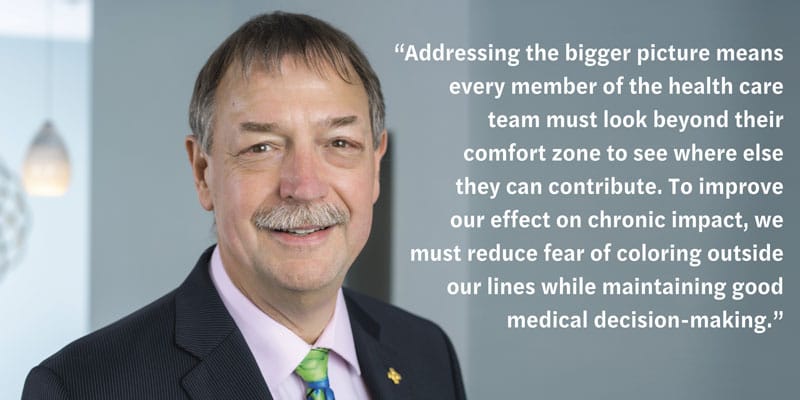Dr. Steve Carstensen reminds dentists who are expanding their SRBD practice to continue thorough research into the many aspects of this growing field.

Diplomate, American Board of Dental Sleep Medicine
Fitting mandibular advancement devices to teeth is easy. Manufacturers have fine-tuned their process, many dentists use digital submissions, and the quality of materials has improved to provide confidence for every delivery appointment. Years ago, I maintained to learners in lectures that the devices are not the hard part. True then, truer now.
Dental Sleep Practice magazine was created in a time where dentists needed to hear that treatment was ‘easy’ and the rewards worthy of the work needed to achieve competence.
The treatment of sleep breathing disorders, which is only about 25 years older than this magazine, has evolved as science provides more insight into the impact on human health from physiologic disruption every night for years and decades. Medicine understands acute impact, which produces symptoms, very well. What is becoming more appreciated is chronic impact that results in degradation of allostatic capacity to the point where body systems cannot return to a stable, homeostatic state. It’s like a stone wall that can withstand a storm but is undermined by a slow steady stream eating away at the foundation.
A dentist encountering a patient diagnosed with SRBD has the opportunity to treat the acute impact – perhaps they should consider that their top priority. Some training programs and many dentists consider that their only obligation. Dentists who choose not to think about the chronic impact provide a limited service, leaving the bigger picture to the overburdened physicians on the patients’ health care team.
This is a legally defensible, staying-in-your-lane way of practicing medicine, but does little to engage every possible means of improving community health. Addressing the bigger picture means every member of the health care team must look beyond their comfort zone to see where else they can contribute. To improve our effect on chronic impact, we must reduce fear of coloring outside our lines while maintaining good medical decision-making.
That mandates dentists to learn more about what is in the ADA definition of our scope of practice, including ‘adjacent and associated structures and their impact on the rest of the human body.’ The American Dental Association hosts its second Wellness Conference in 2025; the Children’s Airway Initiative is in its 8th year of work to provide opportunities for dentists to learn about physiologic changes of chronic impact. Podcasts and webinars host guests from across the medical spectrum to showcase aspects of medicine that add to understanding of the interconnected and inseparable functions of the human organism.
Dentists reading this should ask themselves, or even better, write down so you can see it in front of you, how much time they have spent in the last month, quarter, or year learning about more than traditional dental skills or mandibular advancement devices. Have you studied how proper development of the craniofacial respiratory complex in early life impacts brain health? How breathing patterns can impact loop gain or arousal threshold? Why the FDA approved a blood sugar regulatory drug for treatment of comorbid sleep apnea? There is no limit on what’s out there to be learned, but don’t get stuck by not knowing where to start, or what’s next. Carry on, and go deep.
Dr. L.D. Pankey is famous for his wise statements. One I’ve recently embraced is ‘Take the next step now. The horizon will take care of itself’.
Colonel Scott Williams offers his insights into the importance of thorough research in the area of mandibular advancement therapy for OSA in this article: https://dentalsleeppractice.com/the-importance-of-research/




